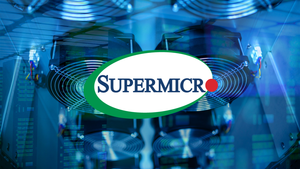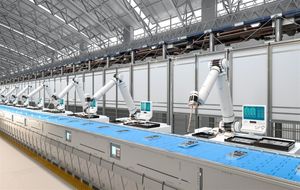
Micron Technology's (NASDAQ: MU) latest earnings report, released on September 23, 2025, has sent a clear and resounding signal through the financial markets: the AI revolution is not just a buzzword, but a tangible driver of unprecedented demand in the memory sector. The semiconductor giant’s highly anticipated forward guidance for the next quarter and fiscal year paints an overwhelmingly optimistic picture, largely fueled by the insatiable need for High Bandwidth Memory (HBM) in AI accelerators and data center GPUs. This bullish commentary from management is not merely influencing investor sentiment towards Micron, but is acting as a powerful catalyst, reshaping expectations and investment flows across the broader technology market today.
What Happened and Why It Matters
Micron Technology had already set a positive precedent by updating its guidance for the fourth quarter of fiscal 2025 on August 11, 2025, signaling a performance far stronger than initially projected. The revised outlook pointed to revenues of $11.2 billion (plus or minus $100 million), a significant jump from the earlier estimate of $10.7 billion. Alongside this, the company raised its non-GAAP gross margin guidance to 44.5% and non-GAAP earnings per share (EPS) to $2.85. These upward revisions, attributed to improved DRAM pricing and robust execution, foreshadowed the strong report delivered today, September 23, 2025, after market close.
The true significance of today's report, however, lies in Micron's forward guidance. Management's commentary emphasized the sustainability and acceleration of demand for HBM products, essential components for the sophisticated AI infrastructure currently being built out globally. Micron revealed plans to ramp up HBM production aggressively, projecting full capacity well into 2026. This commitment underscores the company's confidence in the long-term growth trajectory of AI-driven memory. While DRAM pricing remains a significant tailwind, the company's outlook on the NAND flash memory segment, which has faced headwinds from softer consumer electronics demand, will be crucial for overall margin trends. Investors are also closely watching Micron's capital expenditure (CapEx) plans, with expectations for higher FY26 CapEx focused on new fabrication facilities rather than an immediate acceleration of new supply, signaling strategic growth rather than a rush to oversupply.
AI's Ripple Effect: How Micron's Guidance Might Affect the Market
The market's reaction to Micron's (NASDAQ: MU) optimistic outlook is already palpable. The company's stock has been on a tear, surging nearly 100% year-to-date and an impressive 40% in September alone, indicating that a significant portion of the AI-driven optimism was already priced in. However, the confirmed strong forward guidance is expected to sustain this momentum, potentially pushing valuations higher. Analyst sentiment remains overwhelmingly positive, with most firms maintaining "Buy" or "Strong Buy" ratings and several, including Stifel, TD Cowen, Rosenblatt, and Mizuho, recently raising their price targets, reflecting deep confidence in Micron's pivotal role in the AI buildout and the ongoing memory market recovery.
A robust report with bullish forward guidance from Micron is poised to create a wave of winners across the technology ecosystem. Beyond Micron itself, other memory chipmakers such as SK Hynix and Samsung are likely to benefit, as the report validates a positive cycle for the entire memory industry. The broader AI infrastructure buildout will also receive a boost, potentially bolstering other AI-exposed stocks. Indirectly, companies like NVIDIA (NASDAQ: NVDA), which rely heavily on HBM for their advanced GPUs, are strengthened by Micron's capacity and technological advancements. Conversely, any unexpected weakness or cautious guidance, particularly concerning HBM or DRAM demand, could trigger profit-taking in Micron's stock and potentially dampen enthusiasm across the broader semiconductor sector, as options traders are already anticipating significant price movements.
Broader Implications: A New Era for Semiconductors
Micron's earnings report is more than just a snapshot of one company's performance; it serves as a critical litmus test for the sustainability of AI-driven memory demand and its ability to underpin the broader strength of the semiconductor sector. Confirmation of a robust "AI-fueled earnings super cycle" would firmly entrench positive market sentiment towards technology companies heavily invested in AI, potentially ushering in a new era of growth for the industry. This event fits squarely into broader industry trends emphasizing high-performance computing and data center expansion, where memory is a fundamental bottleneck and a key enabler of AI capabilities.
The ripple effects extend beyond direct competitors, influencing the entire supply chain. Equipment manufacturers, materials suppliers, and even software developers catering to AI applications could see increased demand. Historically, memory cycles have been notoriously volatile, characterized by boom-and-bust periods. However, the unique and persistent demand driven by AI, coupled with strategic capacity management by leading players like Micron, suggests that this cycle might have different characteristics, potentially leading to more sustained growth. Nevertheless, geopolitical risks and ongoing supply chain complexities remain ever-present factors that could influence the long-term outlook for semiconductor companies, necessitating careful monitoring.
What to Pay Attention to Next
In the short term, investors and industry observers should closely monitor the continued ramp-up of HBM production by Micron and its competitors. The pace at which these companies can meet the escalating demand for AI memory will be a critical determinant of market dynamics. Sustained healthy DRAM pricing will also be a key indicator, as will any signs of recovery in the NAND flash memory segment, which could provide additional revenue diversification.
Longer term, attention should be paid to Micron's strategic capital expenditure deployment. While higher CapEx is expected, its efficient allocation to new fabrication facilities and advanced R&D will be crucial for maintaining technological leadership. Potential strategic pivots or adaptations by competitors in response to Micron's aggressive HBM strategy will also be noteworthy. Market opportunities will continue to emerge in areas benefiting from AI infrastructure buildout, but challenges related to potential oversupply if AI demand slows unexpectedly, or if new competitive technologies emerge, should not be overlooked. The overarching question remains whether the current "AI-fueled earnings super cycle" can be sustained, or if the industry will revert to more traditional memory market fluctuations.
Conclusion
Micron Technology's (NASDAQ: MU) Q4 2025 earnings report and, more significantly, its forward guidance, mark a pivotal moment for the semiconductor industry. The unequivocal emphasis on robust, AI-driven memory demand has solidified investor confidence and set an optimistic tone for the broader tech market. The company's strategic focus on High Bandwidth Memory (HBM) and its plans for sustained production into 2026 underscore its central role in enabling the ongoing AI revolution.
Moving forward, the semiconductor sector's trajectory will be heavily influenced by the continued strength of AI-driven demand. Micron's performance will serve as a bellwether, offering insights into the health and growth prospects of the entire ecosystem. Investors should continue to watch for developments in HBM production, DRAM pricing trends, and the strategic capital expenditure decisions of leading memory manufacturers. While the current outlook is undeniably bright, vigilance against potential market shifts, technological disruptions, and geopolitical factors will be essential for navigating the evolving landscape in the coming months. The era of AI is here, and Micron is at its forefront, shaping the future of memory and, by extension, the entire technology world.






